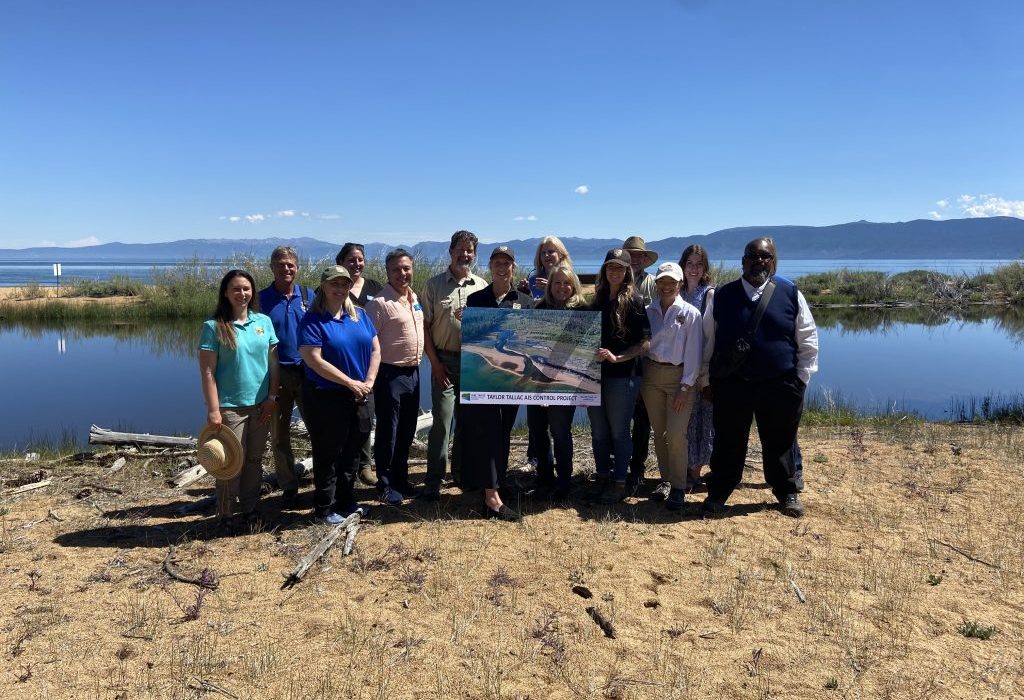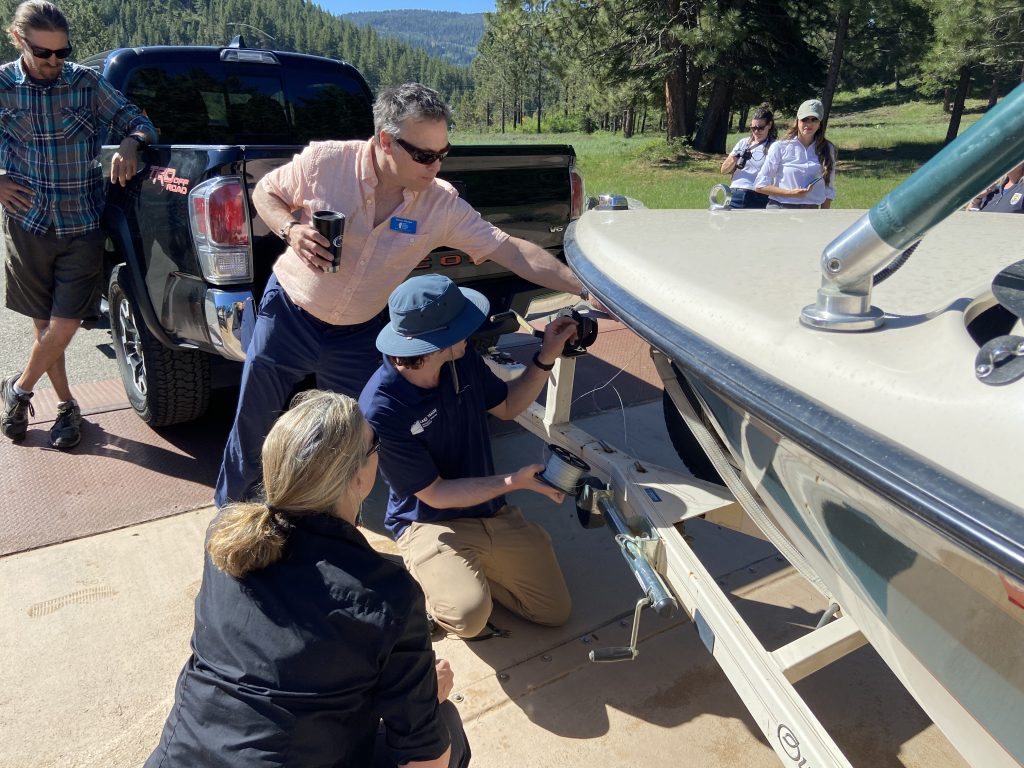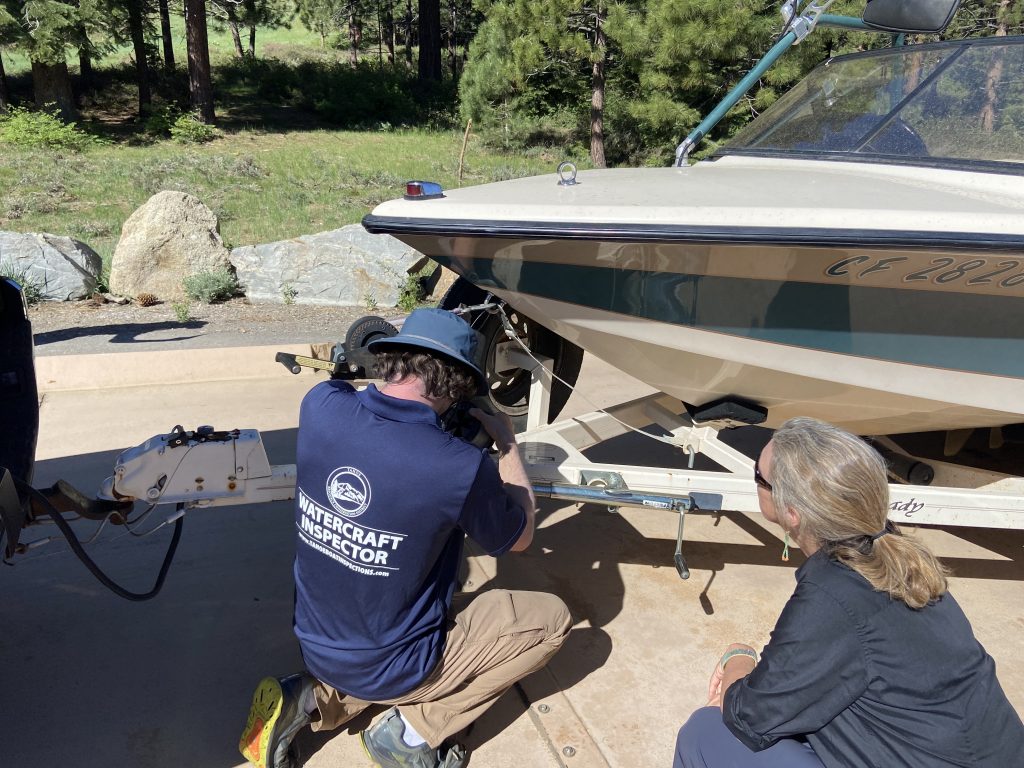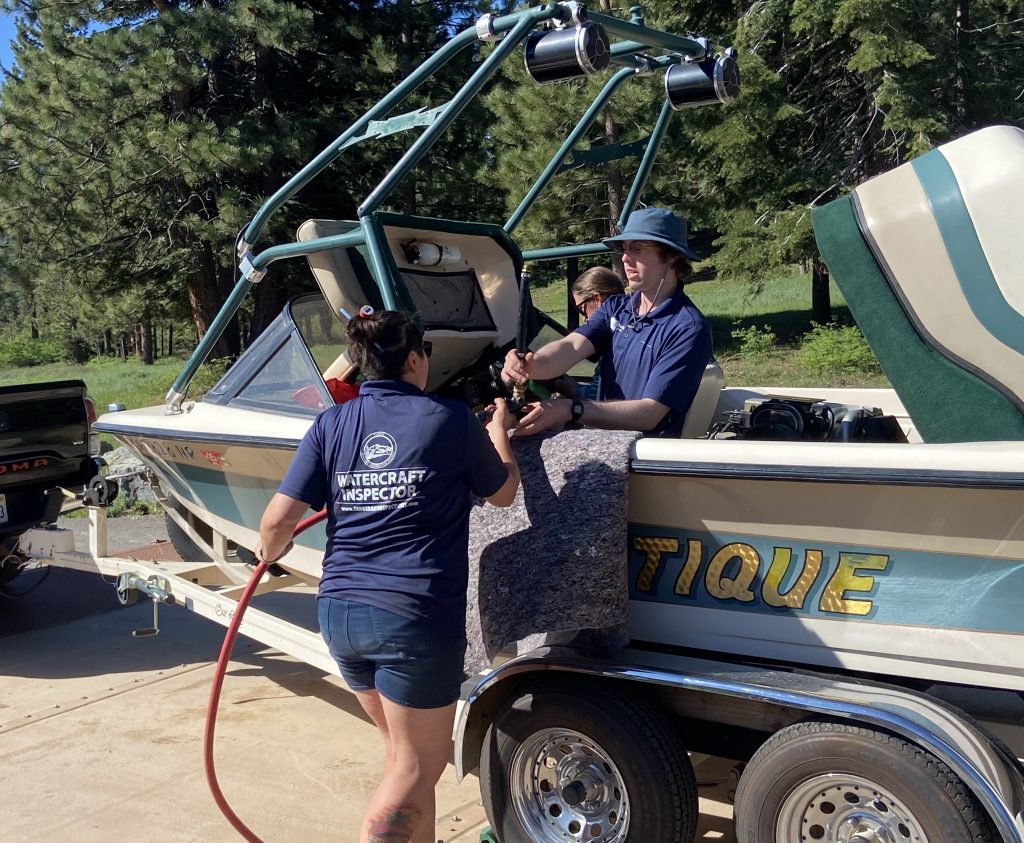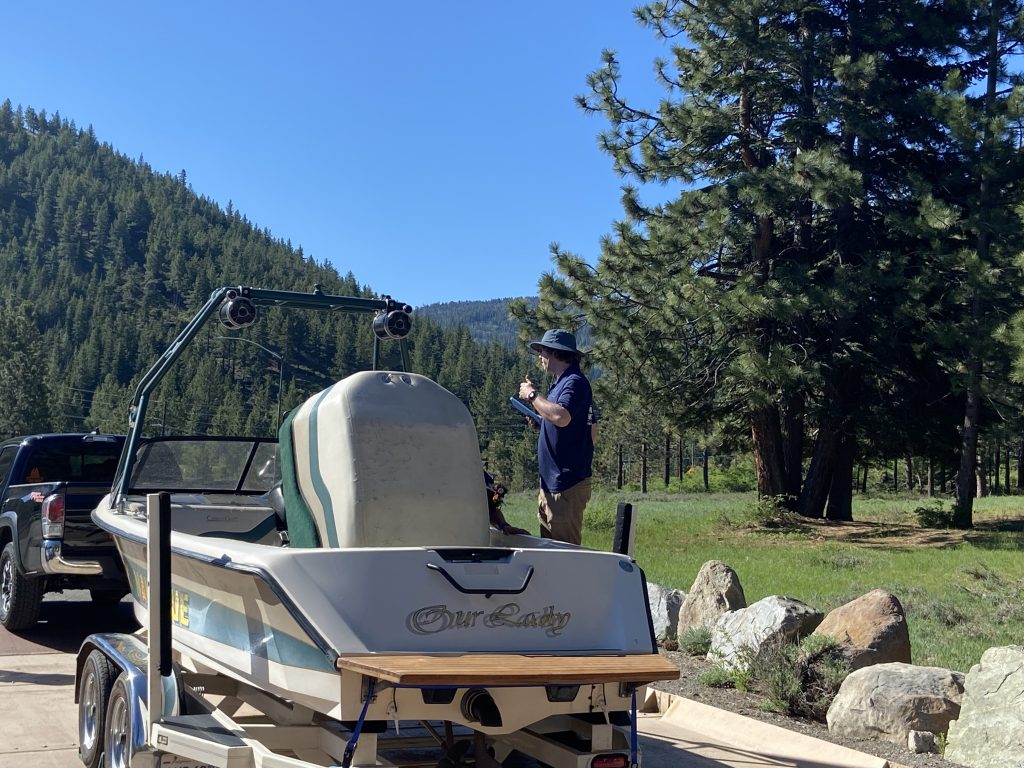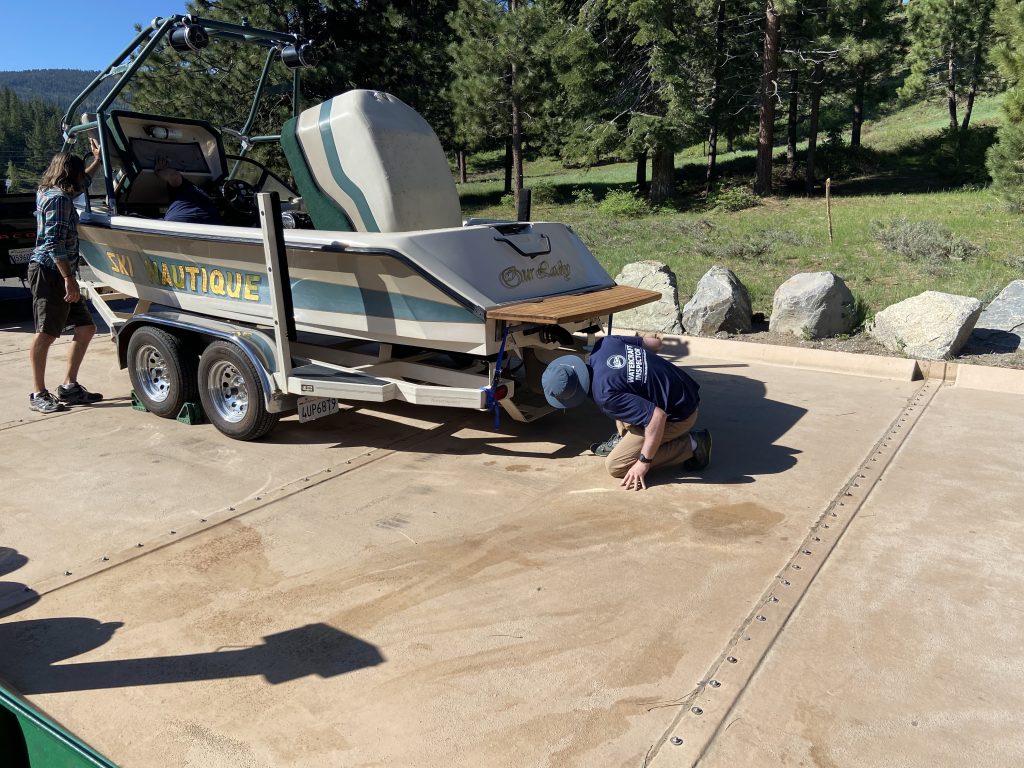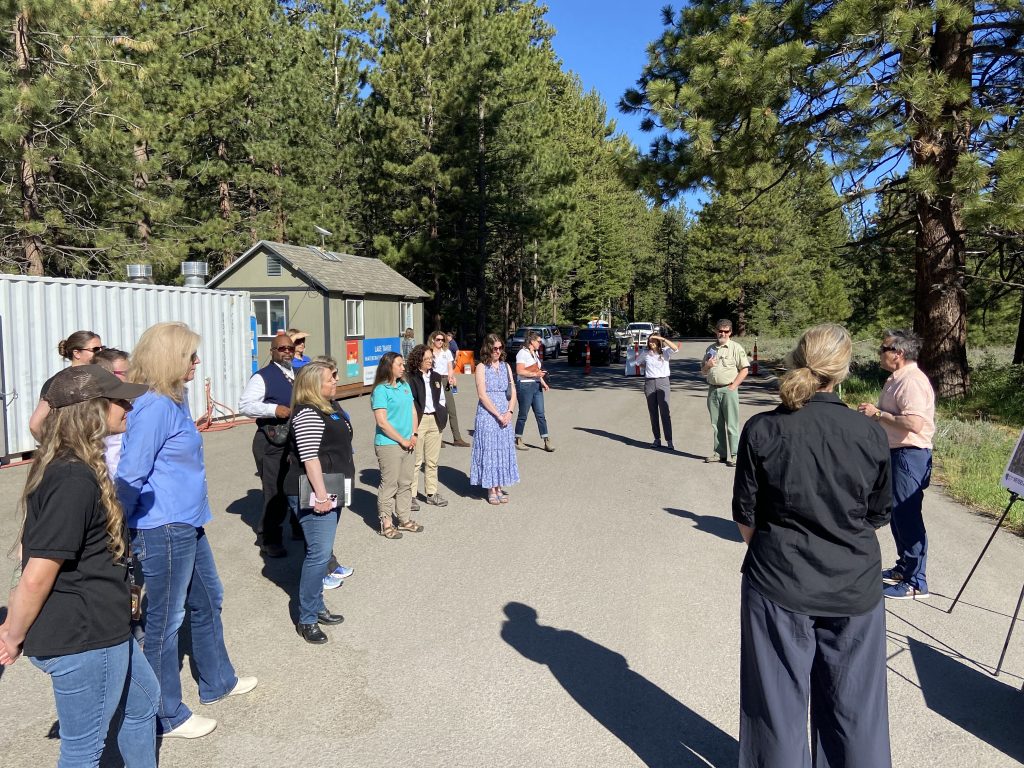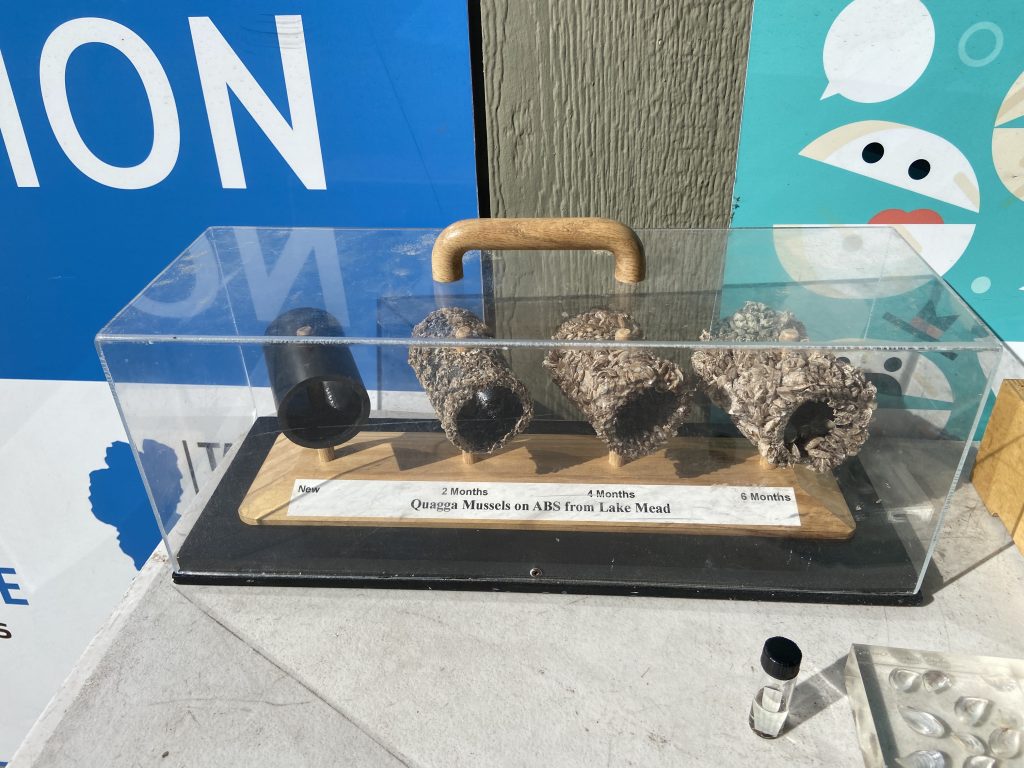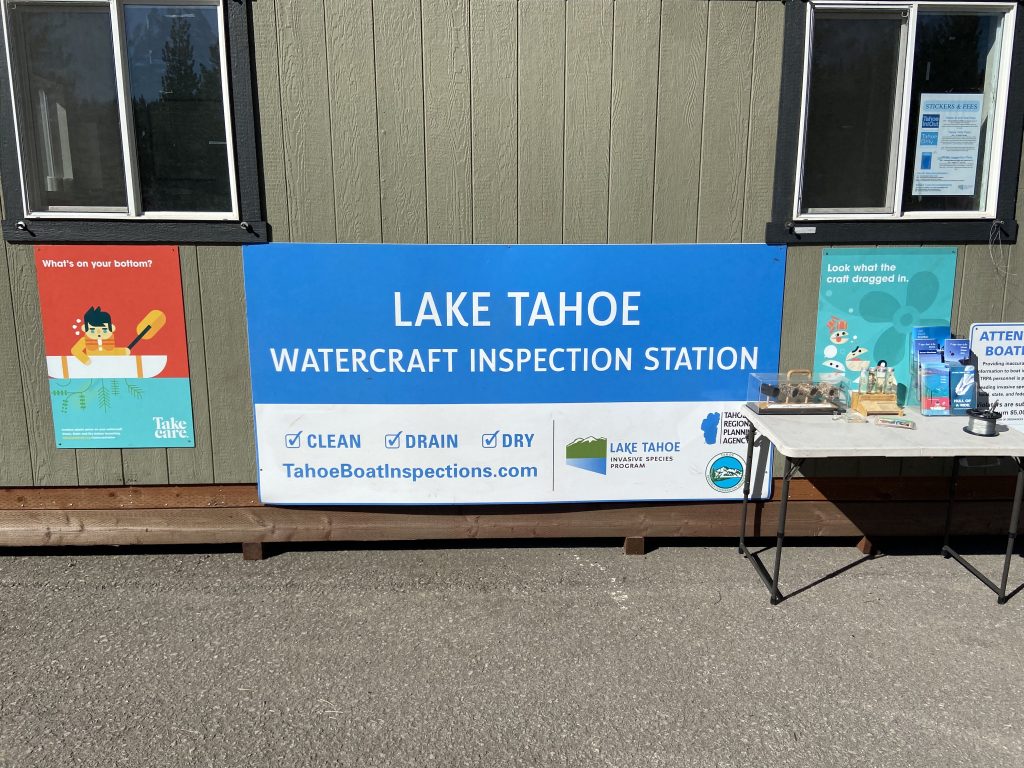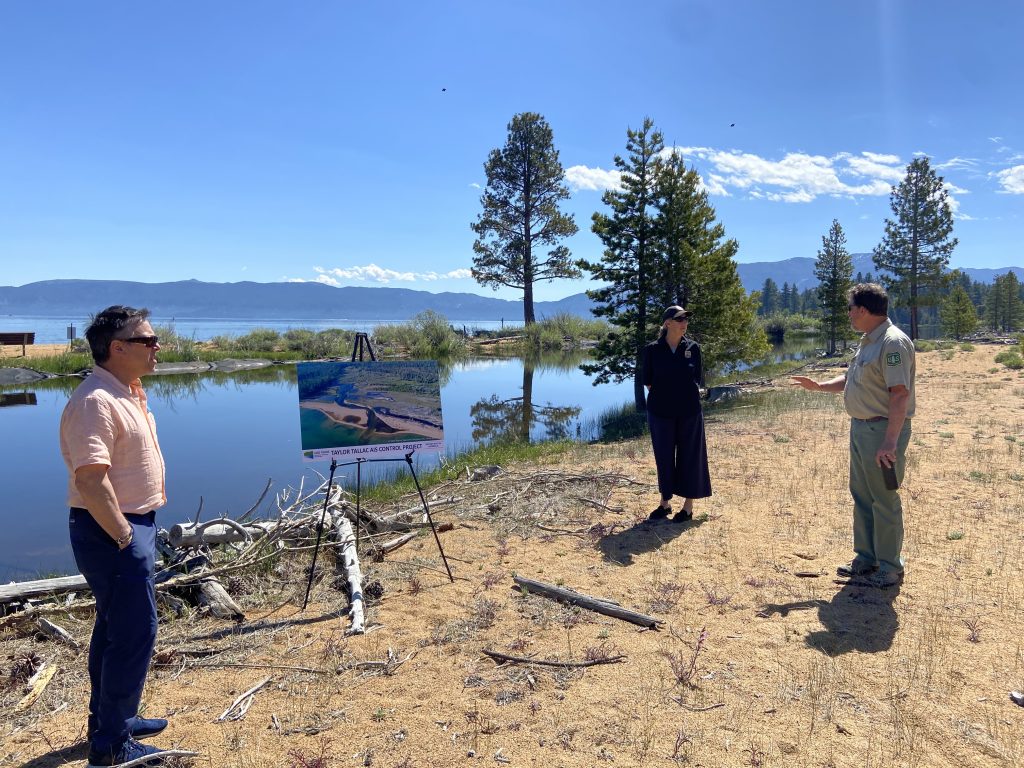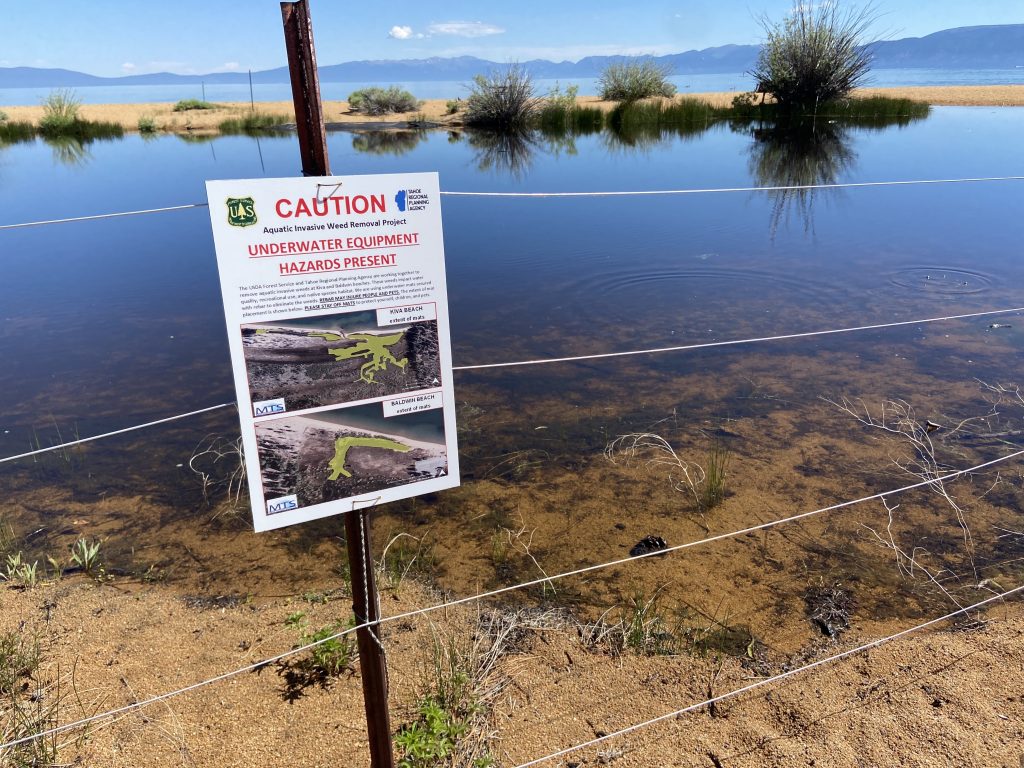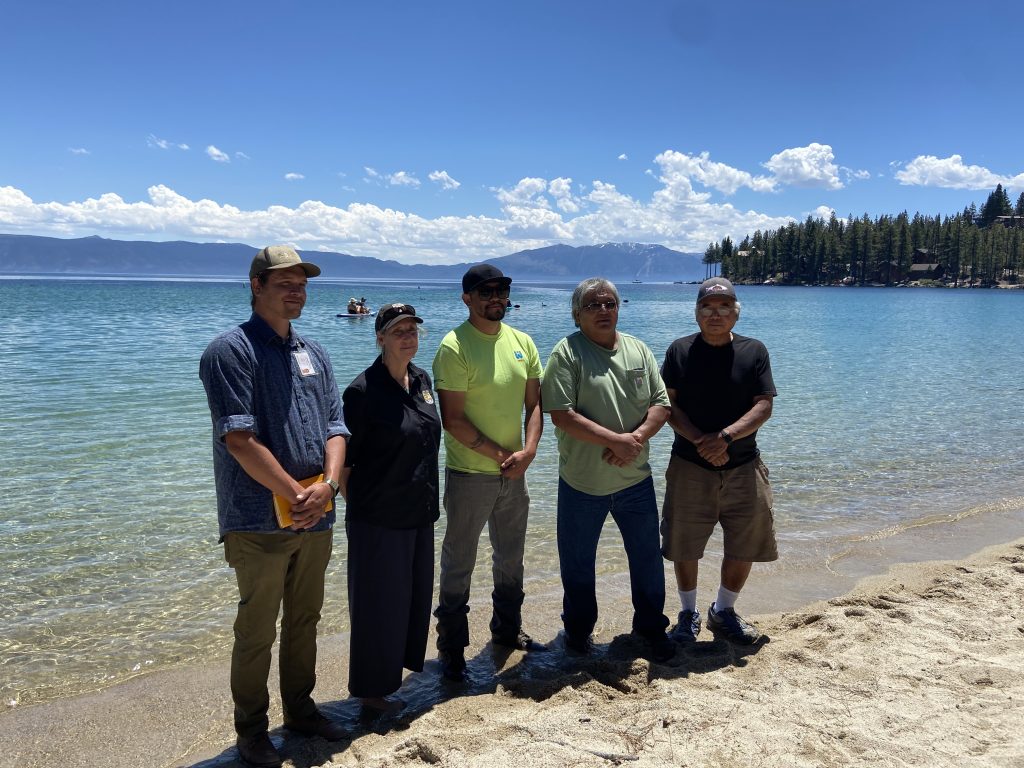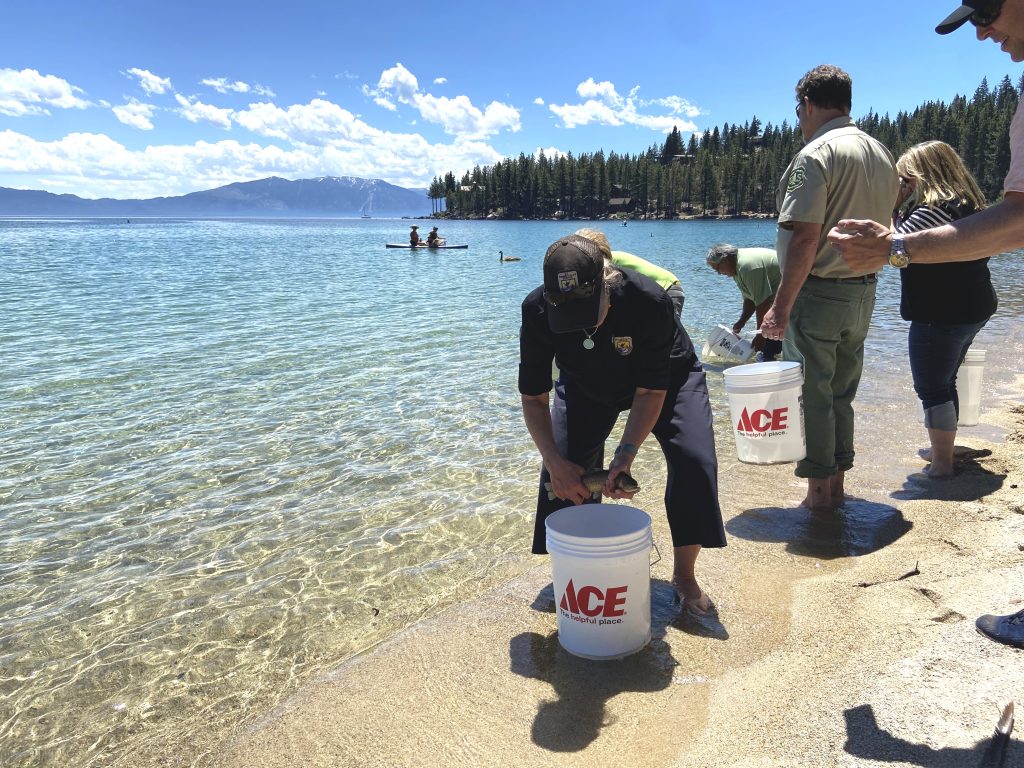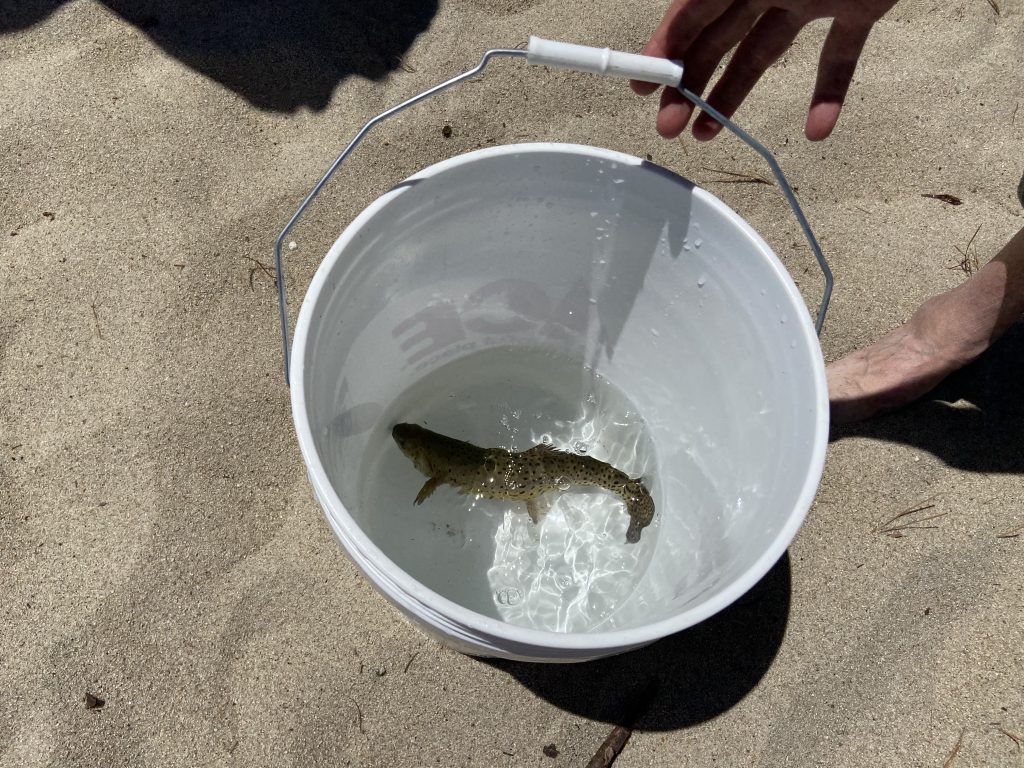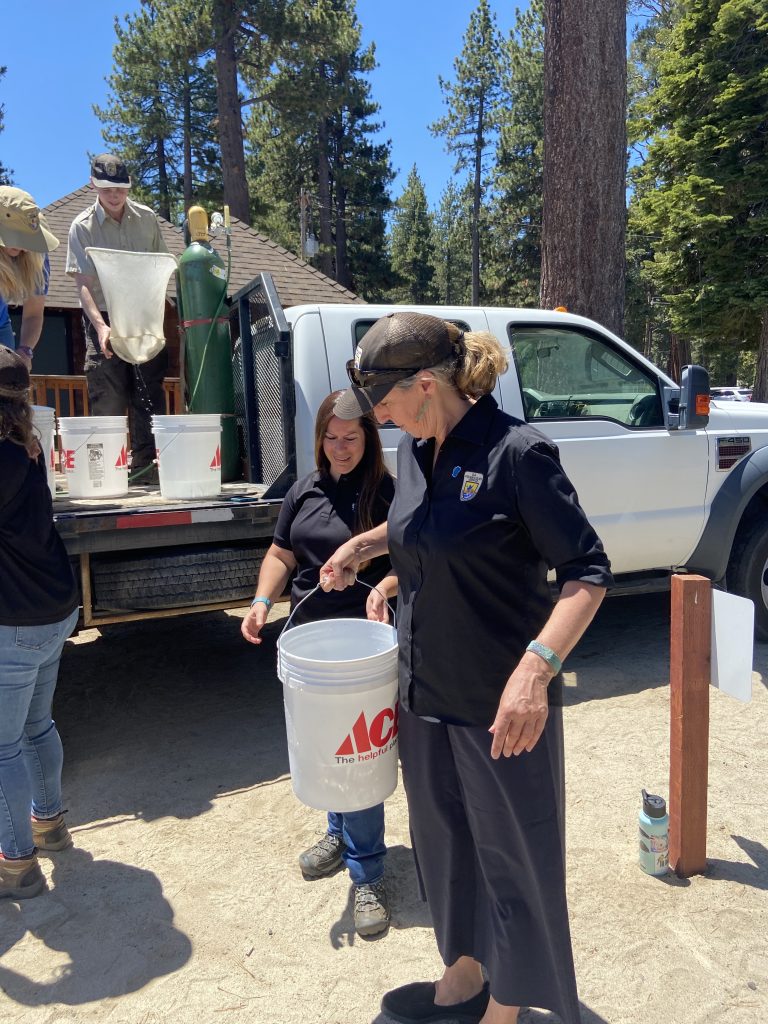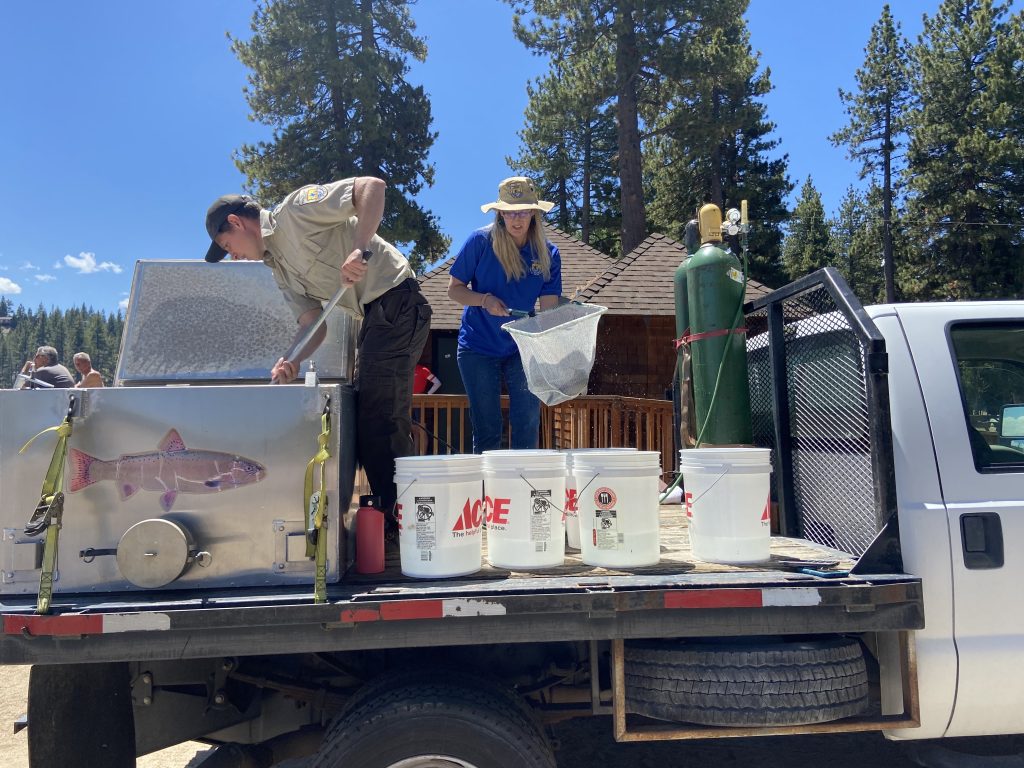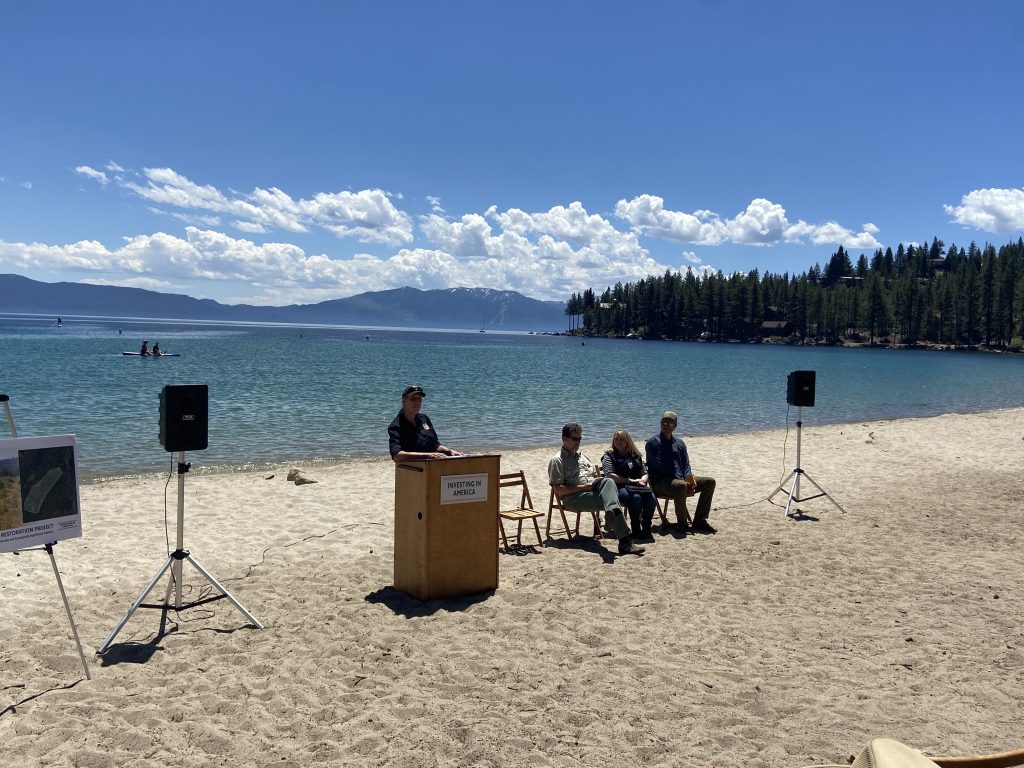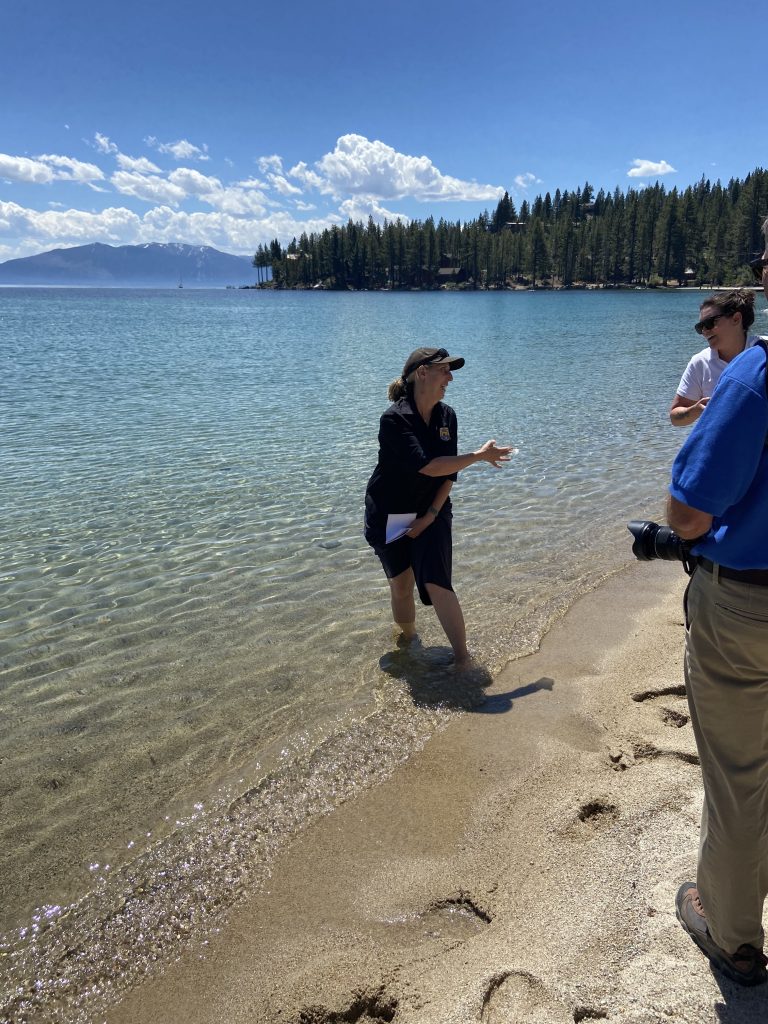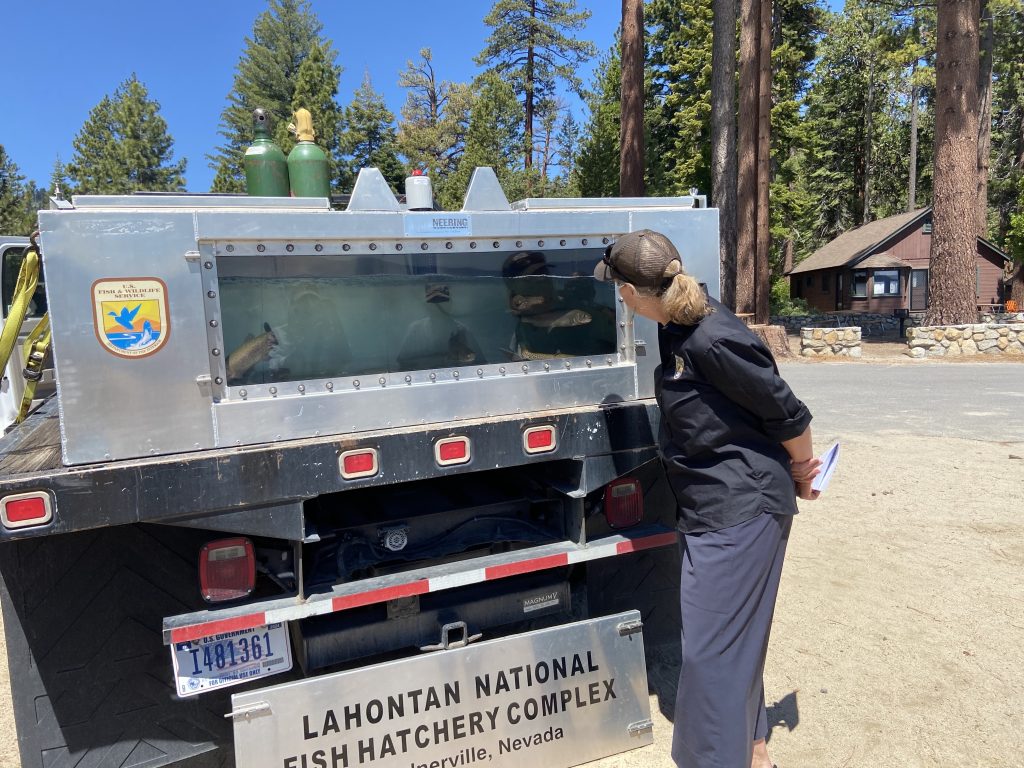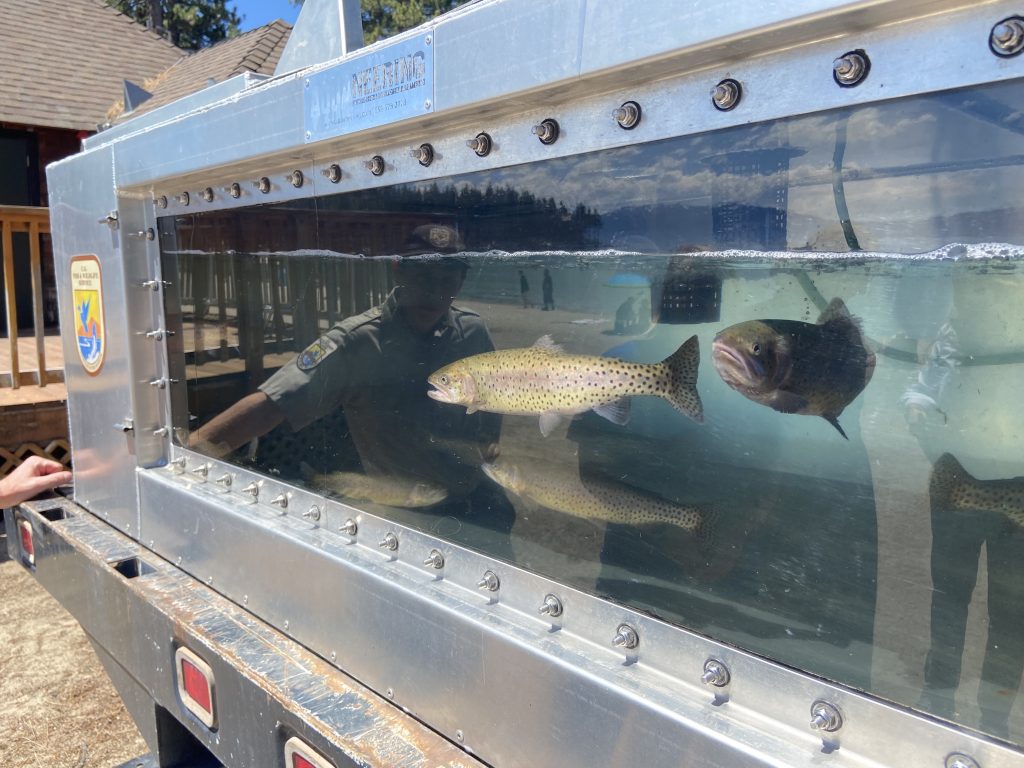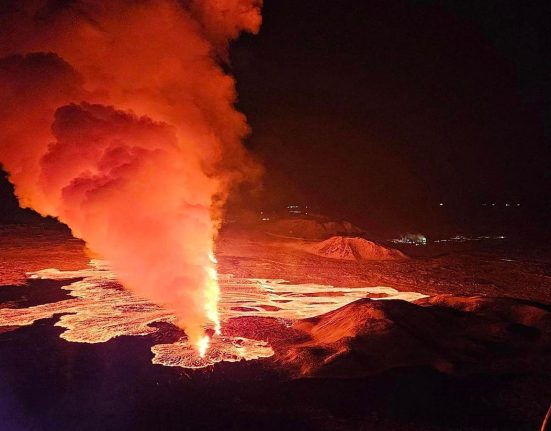SOUTH LAKE TAHOE, Calif. – During a trip to South Lake Tahoe on Thursday, June 6, U.S. Fish and Wildlife Service Director Martha Williams announced $3.4 million in funding from the Bipartisan Infrastructure Law to prevent and combat the spread of aquatic invasive species in Lake Tahoe.
Williams announced Meek’s Bay, following a tour she took with Tahoe Regional Planning Agency of two project sites in the Basin that are also funded through the Bipartisan Infrastructure Law.
The tour started at the Spooner Watercraft Inspection Station where Dennis Zabaglo, TRPA Aquatic Invasive Species Program Manager discussed the AIS watercraft inspection program.
TRPA began volunteer watercraft inspections in 2008. In 2009, they began doing mandatory inspections at all the ramps in the Basin.
Zabaglo said because of the high anxiety normally surrounding a boat launch, paired with the limited space available at the launches, they moved the inspections away from those areas in 2010.
Boaters receive a tie on a permanently affixed part of the hitch following an inspection and decontamination. The tie can only be removed by an operator at a boat launch. It will be replaced as boats come out of Lake Tahoe. If the tie isn’t there, boats will not be allowed to launch.
TRPA partners with the Tahoe Resource Conservation District to operate the watercraft inspection stations. There are three locations, one in Alpine Meadows, one in Meyers, and the Spooner location.
The Spooner location is a temporary location set up and broken down yearly.
“It’s a big strain on our resources… and plus it’s not permanent, we pride ourselves on our customer service so a permanent inspection station will allow us to make sure the boating public is having a good experience,” Zabaglo said.
TRPA is working with the Forest Service and Nevada Department of Transportation to build a permanent station on Highway 28. The project is currently in its planning stages.
The tour then took Williams and her staff to Baldwin Beach, where she was able to see the Benthic Barriers installed at Taylor and Tallac Creeks.
There, Erick Walker, Forest Manager for the Lake Tahoe Basin Management Unit discussed the history of LTBMU, which was formed to manage the Lake Tahoe Basin watershed portions of the Eldorado, Tahoe, and Humboldt-Toiyabe Forests.
“So, while we’re not a federally proclaimed national forest, we look, smell, and behave just like a national forest,” Walker said. LTBMU is the largest land manager in the Basin.
The service has been acquiring shoreline parcels near the Taylor-Tallac area. Baldwin Beach is a hugely popular tourist destination in the summer, and Walker said along with the increase in people at the beach, there has also been an increase in invasive species, like bass, bullfrogs and aquatic plants.
The Benthic Barriers were placed in 2020 to kill the AIS without using chemicals by blocking the plants from receiving light. Zabaglo said they hope to remove the barriers this Fall.
Finally, the tour moved to Meeks Bay where a press conference was held to announce the $3.4 million funding.
The conference was started with a speech by Herman Fillmore, Cultural/language Resources Director with Washoe Tribe. He began with a discussion of the importance of Lake Tahoe and the surrounding areas. He spoke about the Meeks Meadow restoration project the tribe has been working on, which will help restore the watershed, which in turn will help the health of the Lahontan cutthroat trout, which has recently been reintroduced back into the lake.
“These cutthroat trout are not only beneficial to fishing but they play an important part in this ecosystem as well,” Fillmore said.
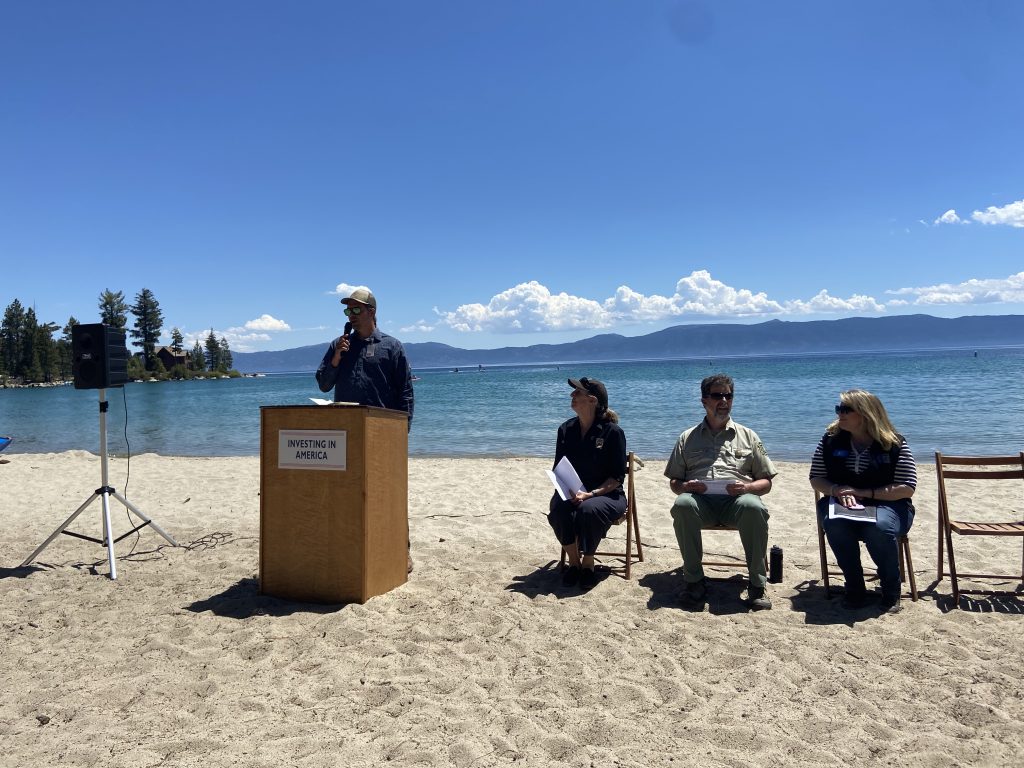
Following the press conference, Williams and other attendees, including tribal elders, released trout into the lake.
“This significant investment from President Biden’s Investing in America agenda comes at a crucial time as the Lake Tahoe Basin continues to see threats from the introduction and spread of aquatic invasive species,” said U.S. Fish and Wildlife Service Director Martha Williams. “The valued partnerships and Tribal leadership in the Basin provide the collaborative environment needed to restore the habitats of Lahontan cutthroat trout and other native species.”
The announcement marks the third year of funding for these ongoing restoration projects. The Department has also launched the Invasive Species Keystone Initiative, a key conservation initiative through the Restoration and Resilience framework, that will guide $2 billion in investments from the Bipartisan Infrastructure Law and Inflation Reduction Act.
Julie Regan, Executive Director, TRPA, who accompanied Williams on the tour was pleased with the outcome of the day.
“[Today] we’re really just celebrating investment in Lake Tahoe’s future,” Regan said. “We’re really trying to shine a national spotlight on the work that we’re doing that is completely collaborative with so many partners and showing the rest of the country that if we can do it here, it can be accomplished throughout the country.
“I feel the day has been a success,” Regan continued. “Meeting Director Williams and hearing her enthusiasm for the environment and all the work that we’re doing… she really embraced the complexity and really seemed to understand what we’re going through.”
While Williams was very excited to participate in the trout release, it was not the most exciting part of her day.

